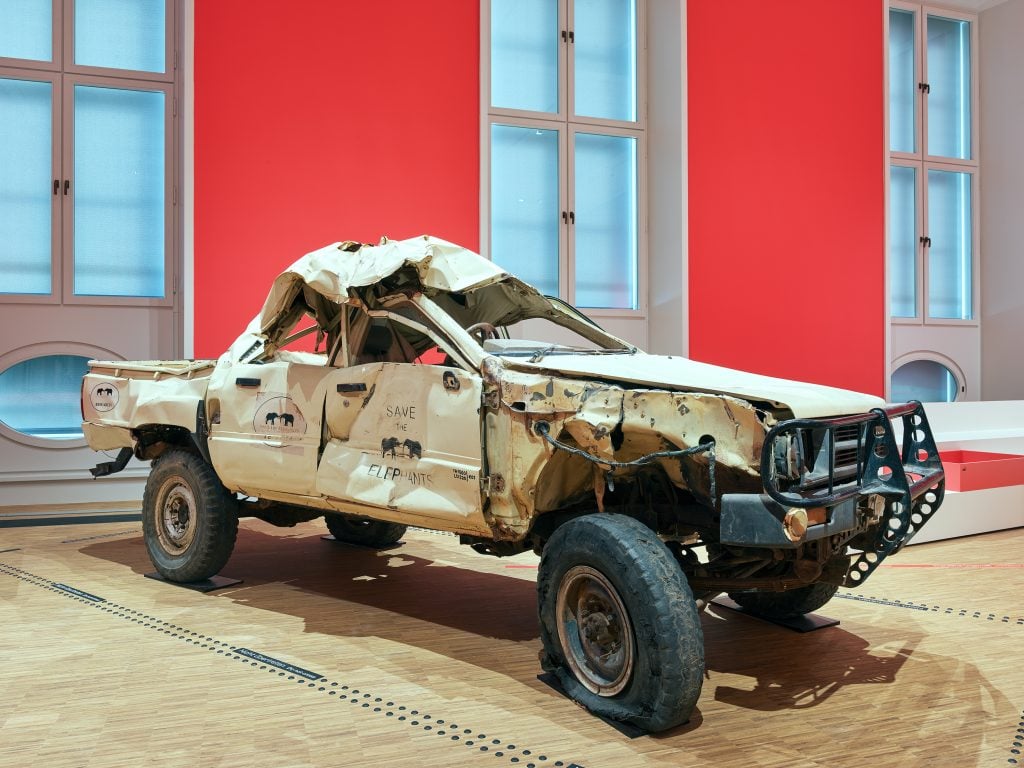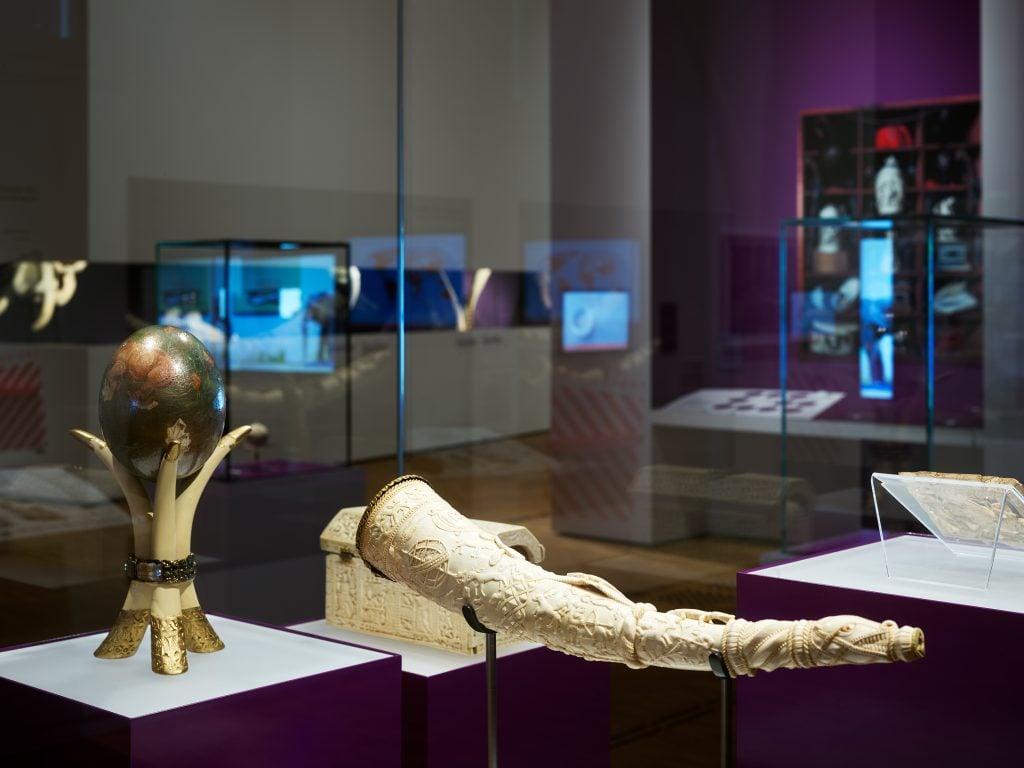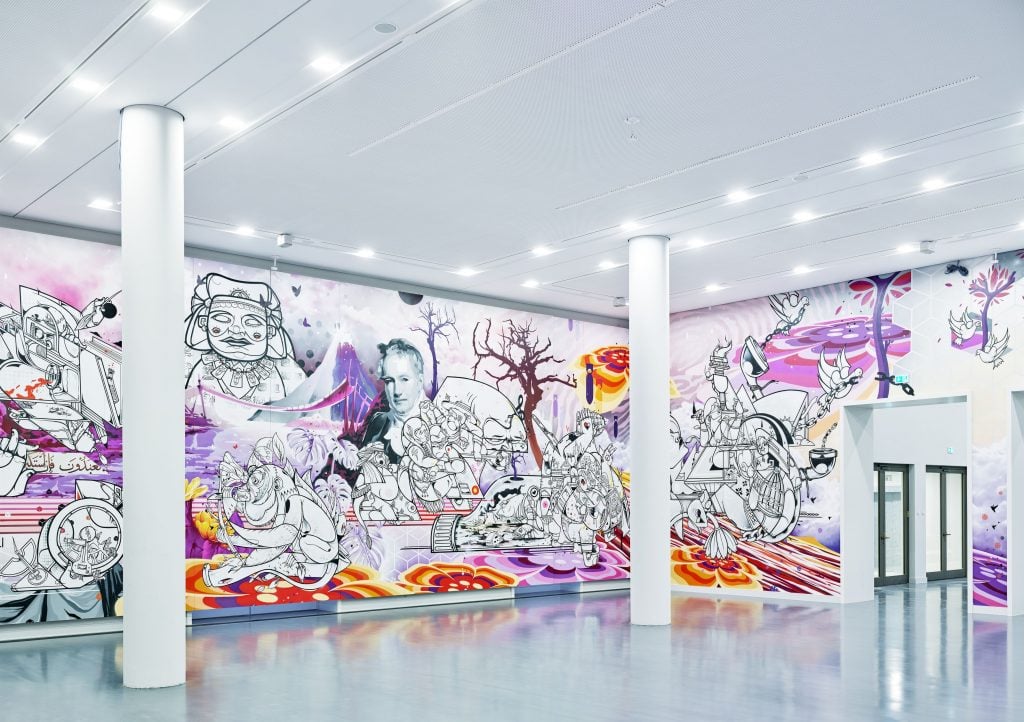Art & Exhibitions
Berlin’s Embattled Humboldt Forum Has Opened Its Doors at Last. Can It Persuade Its Critics to Give It a Chance?
After numerous delays, the institution opens its doors to the public tomorrow.

After numerous delays, the institution opens its doors to the public tomorrow.

Kate Brown

The highly anticipated—and highly criticized—Humboldt Forum will finally open its doors to the public in Berlin tomorrow after years of delays.
The €680 million ($802 million) cultural institution will open with six shows this week, followed by a staggered rollout of further exhibitions in the fall and early next year.
Since its originally planned opening in December was effectively canceled due to the pandemic, the building has stood empty, apart from the curators working inside. Patio chairs dotting the main courtyard did little to add warmth to the Franco Stella-designed building, which is both a plaster-cast ode to the Prussian palace that once stood on the site before World War II, and a hyper-modern structure of cold concrete.
The opening of the more closely watched parts of the institution—the ethnological and Asian art collections—will open on September 22. Early next year, a temporary exhibition of the Berlin State Museums’ Benin bronze collection, one of the largest in the world, will open, and Germany has pledged to begin restitution that year to Nigeria. Further sections of those collections’ displays will open at the same time, including those related to South America, Islam, and southeast Asia.

Exhibition view “terrible beauty” © Stiftung Humboldt Forum im Berliner Schloss / Photo: Alexander Schippel
For now, the first and second floors of the building will host large-scale public shows that address the intersection of society and nature. The building’s name comes from Alexander von Humboldt, a Prussian-era scientist and naturalist who is thought to have been one of the first to discuss human-induced climate change. (He was also complicit in colonial-era expeditions where he carried out his research.)
Highlights of the Humboldt’s inaugural program include “Terrible Beauty: Elephant. Human. Ivory,” an exhibition that looks at the history of the ivory trade, and spans the millennia of human’s fascination with the animal part.
“Ivory has a unique relationship with nature and culture,” said one of the show’s co-curators, Alberto Saviello. “It is a symbol of purity, wealth, and power, but also ruthless exploitation of nature and humans.” The show drives home the illicit industry’s global scale. Historical objects, like the first-known sculpture of mammoth, carved with mammoth tooth ivory, date back 40,000 years. Elsewhere, a delicately carved jewelry box hails from 16th-century Sri Lanka and a crushed car from a failed elephant rescue mission in Africa are all set within a blood-red space. In the entire exhibition, one can hear the labored breathing of a dying elephant.

Exhibition view “terrible beauty” © Stiftung Humboldt Forum im Berliner Schloss / Photo: Alexander Schippel.
After all the criticism around how objects arrived into the Humboldt’s collections, the exhibition remains slightly opaque on provenance. More often than not, details about the source of objects are not included in the show’s many instructional panels; instead, they’re tucked into red drawers that one needs to pull out to read.
Despite its sturdy exterior, the Humboldt Forum lies on increasingly fragile ethical ground. In the more than 10 years since its plans were drawn up, awareness around Europe’s long history of illicit acquisitions has moved from academic backwaters into mainstream news headlines.
One of the most engaging shows is the Humboldt Lab’s second-floor exhibition “After Nature,” which takes a novel and deconstructed approach to a scientific show about how climate change and species extinction is interrelated with democracy.

Kulturprojekte Berlin and Stiftung Stadtmuseum Berlin. Photo: Alexander Schippel.
Glass vitrines hang from a gridded metal track on the ceiling in rows. The interactive exhibition is a sort of wunderkammer of diverse items that reconsider the political ideologies inextricably entwined in scientific research. The show’s curator, Johanna Stapelfeldt, described it as an act of “ambivalent remembering.”
Of course, even with the inaugural offering of ambitious exhibitions, the institution continues to draw discussions about whether it should even exist at all. The German Democratic Republic’s parliament, the Palast der Republik, stood in the same spot until 2006, when it was torn down to make way for what would become the Humboldt Forum. An exhibition in the cellar tries to offer some reconciliatory perspective by showing the many manifestations of the site from the relics that were found in the dig—conveying how the location has an even longer history than East Germany or even the Prussian era. Through its halls, small pieces of the Palast der Republik hang or appear on special displays. (A permanent video panorama by design bureau chezweitz tells the story of the location’s history more effectively.)
“I don’t think anyone would have torn down the Palast der Republik today,” said Alfred Hagemann, head of the Humboldt’s “history of the site” department.
It is indeed encouraging to finally see the museum’s intellectual prowess working in concert with the building, but how well it will all play out given the challenges that remain in public opinion is an open question.
The Humboldt Forum in Berlin opens July 20.